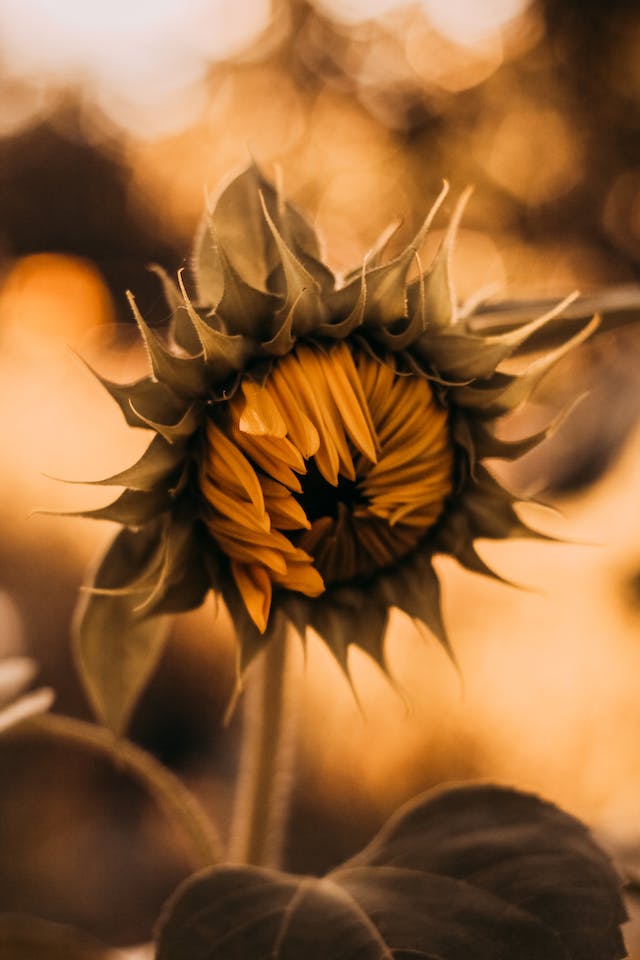“Pruning Stella Cherry Trees: When And Why It’s Important”

Introduction
Stella Cherry Trees are a popular choice for gardeners and enthusiasts. They are known for their compact size, self-pollinating abilities, and delicious sweet cherries. The Stella Cherry Tree can bring plenty of rewards to your backyard.
We’ll explore everything you need to know about Stella Cherry Trees.
A Brief Overview of the Stella Cherry Tree
Stella Cherry Trees are a beloved addition to gardens around the world. These trees are part of the Prunus genus. They are renowned for their self-pollinating nature.
Stella Cherry Trees don’t need a pollination partner to bear fruit. Combined with their heavy yield of deep red, juicy cherries, make an excellent choice.
The Origins of the Stella Cherry Tree
Where Did Stella Cherry Trees Come From?
The Stella Cherry Tree was first introduced in the 1960s. It originated from the Summerland Research Station in British Columbia, Canada. The Stella variety was the first self-pollinating sweet cherry ever developed. This eliminated the need to plant multiple cherry trees for pollination purposes.
Dr. K.O. Lapins, a Canadian plant breeder, developed this variety by crossing two other cherry types. His work paved the way for other self-fertile cherry varieties.
How Stella Became a Standout Variety
The Stella Cherry Tree became celebrated for its traits:
- Self-pollination: Stella was the first sweet cherry variety capable of fertilizing itself.
- Cold hardiness: Its ability to withstand cooler climates suited it for diverse growing regions.
- Prolific fruit production: Stella trees produce large crops of cherries with a sweet, rich flavor.
It is a favorite among those who value ease of growth and high fruit yield.
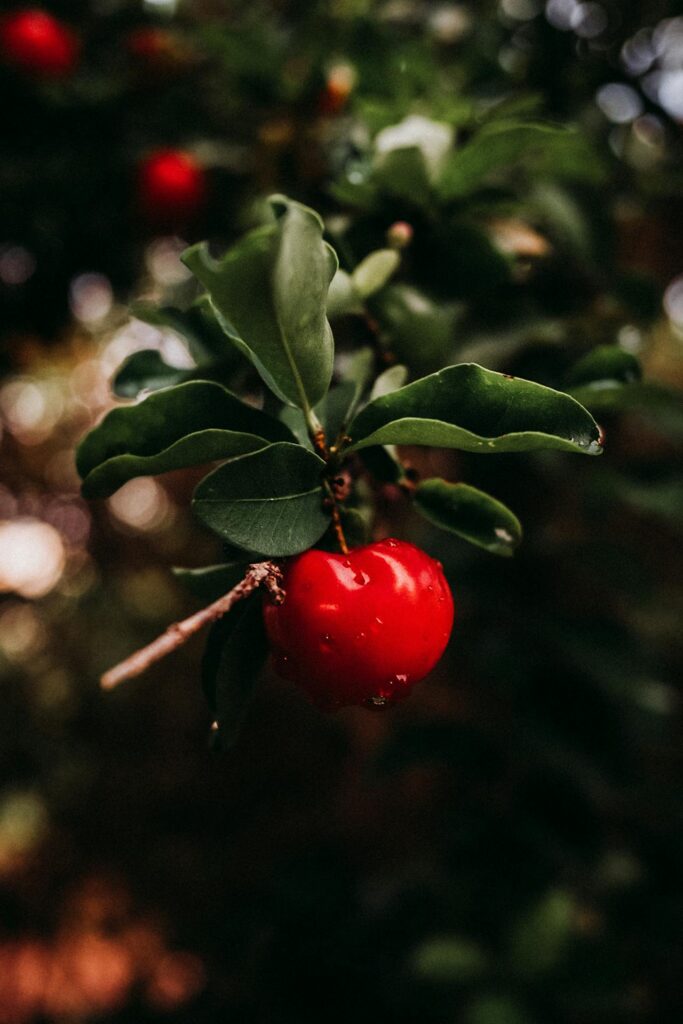
Key Characteristics of the Stella Cherry Tree
What Makes Stella Cherry Trees Unique?
One of their standout qualities is their early fruiting capability. Stella trees begin to bear fruit within 2–4 years of planting.
Physical Features: Size, Shape, and Blossoms
Stella Cherry Trees are medium-sized, reaching heights of 10–15 feet at maturity. They are ideal for smaller gardens or container planting. The tree’s dark green leaves provide a beautiful contrast to its vibrant fruit and flowers.
Stella Cherry Trees produce a display of white blossoms, creating a visual appeal. These flowers attract important pollinators like bees and butterflies.
The Appeal of Stella Cherries: Taste and Texture
The cherries make Stella trees so beloved. They produce heart-shaped fruits with dark red skin and a deep, sweet flavor. The flesh is juicy, perfect for fresh eating, desserts, and preserves.
Here’s why Stella cherries are a favorite:
- Flavor: Sweet, rich, and complex.
- Size: Larger than many other cherry varieties.
- Versatility: Suitable for eating raw, baking, or canning.
Stella cherries are described as having a “classic cherry” taste.
Growing Stella Cherry Trees: A Beginner’s Guide
The Best Climates for Stella Cherry Trees
Stella Cherry Trees are suitable for a wide range of growing zones. They perform best in USDA Hardiness Zones 5–9. Cool winters are necessary for a chilling period of approximately 700–800 hours.
These trees can withstand light frosts. Prolonged exposure to freezing temperatures may damage the blooms or fruit. Hot, dry climates can stress the tree.
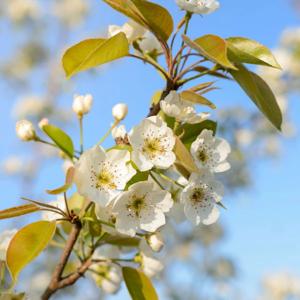
Choosing the Right Spot: Sunlight and Soil Needs
Stella Cherry Trees need a sunny location with at least 6–8 hours of direct sunlight per day. Sunlight is important for healthy fruit production and tree vigor.
Stella Cherry Trees prefer well-draining, loamy soil with an acidic to neutral pH level (around 6.0–7.0).
Tips for finding the perfect planting spot:
- Avoid low-lying areas where water may pool.
- Choose a location sheltered from strong winds.
- Ensure there’s enough space for the tree’s canopy to spread. Plant it about 10–15 feet apart from other trees or structures.
Planting Tips for a Healthy Start
Here’s a step-by-step guide to planting:
- Timing: Plant your Stella Cherry Tree in early spring or late fall when the tree is dormant.
- Digging the Hole: Dig a hole that’s twice as wide and deep as the tree’s root ball.
- Preparing the Soil: Mix organic compost or well-rotted manure into the soil to provide essential nutrients.
- Positioning the Tree: Place the tree in the hole. Ensuring that the root collar (where the roots meet the trunk) sits above ground level.
- Backfilling: Fill the hole with soil, tamping it down to remove air pockets.
- Watering: Water to help the soil settle and hydrate the roots.
- Mulching: Apply a layer of organic mulch around the base of the tree. Keep the mulch a few inches away from the trunk to prevent rot.
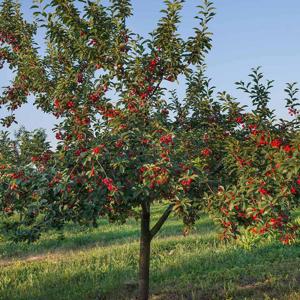
Caring for Your Stella Cherry Tree
Essential Watering and Fertilizing Techniques
Watering and fertilizing are essential components of this care routine.
Watering Tips:
- Young Stella Cherry Trees need consistent watering. Water once or twice a week, depending on weather conditions.
- Mature trees enjoy regular watering during dry spells and the fruiting season.
- Use a soaker hose or drip irrigation system to ensure deep watering. Avoid overhead watering that can invite disease.
Fertilizing for Growth:
- Apply a slow-release fertilizer in early spring before new growth appears. Look for a fertilizer with an NPK ratio of 10-10-10. Use a fertilizer formulated for fruit trees.
- Avoid over-fertilizing to prevent leafy growth at the expense of fruit production.
- Supplement with compost or well-rotted to enrich the soil.
Pruning for Growth and Fruit Production
Pruning is essential for shaping the tree. It will encourage airflow and the largest fruit production. Stella Cherry Trees enjoy annual pruning in late winter. Early spring pruning will benefit when the tree is dormant.
How to Prune Your Stella Cherry Tree:
- Remove Dead or Damaged Wood: Start by cutting away dead branches, diseased, or broken.
- Thin the Canopy: Trim overcrowded branches to allow light and air to reach the inner parts of the tree.
- Shape the Tree: Focus on creating an open, vase-like shape that encourages even growth.
- Maintain Size: For smaller gardens, prune the tree’s height to keep it manageable.
Pruning improves fruit quality and helps prevent diseases. Brown rot and powdery mildew is prevented by enhancing airflow.

Dealing with Pests and Diseases
Stella Cherry Trees face challenges from pests and diseases. Common threats include:
Pests:
- Aphids: These small insects cause curling leaves and reduced vigor. Use insecticidal soap or neem oil to control infestations.
- Cherry Fruit Fly: These pests lay eggs in the fruit and cause wormy cherries. Apply sticky traps and use insecticides if necessary.
- Birds: Birds love cherries as much as humans do! Protect your fruit with bird netting during the ripening season.
Diseases:
- Brown Rot: A fungal disease that causes fruit to rot on the tree. Prevent it by removing any infected fruit and avoiding overhead watering.
- Powdery Mildew: This causes a white, powdery coating on leaves. Prune to improve airflow and treat with a fungicide if needed.
Stay vigilant and address issues early.
Harvesting Stella Cherries
How to Know When Your Cherries Are Ready
Stella cherries ripen in mid-to-late summer. Knowing the right time to harvest ensures you enjoy the cherries at peak sweetness and flavor.
Here are the key signs that Stella cherries are ready for picking:
- Color: The cherries should be a rich, deep red color.
- Firmness: Gently squeeze the fruit. Ripe cherries should feel firm but not hard.
- Taste: Sample one! If it’s sweet with a hint of tartness, it’s time to harvest.
Track the tree as the cherries ripen. Birds and pests will start feasting on the fruit.
Tips for Picking Stella Cherries Without Damage
Follow these steps for a successful harvest:
- Handle Gently: Use clean hands or garden gloves to pick the cherries to avoid bruising the fruit.
- Twist and Pull: Grip the cherry stem between your fingers. Twist and pull the fruit. Avoid pulling the fruit off the tree.
- Pick with Stems Intact: Leave the stems attached if you plan to store the cherries. This extends their shelf life.
- Use a Basket or Tray: Place harvested cherries in a shallow container to prevent crushing the fruit.
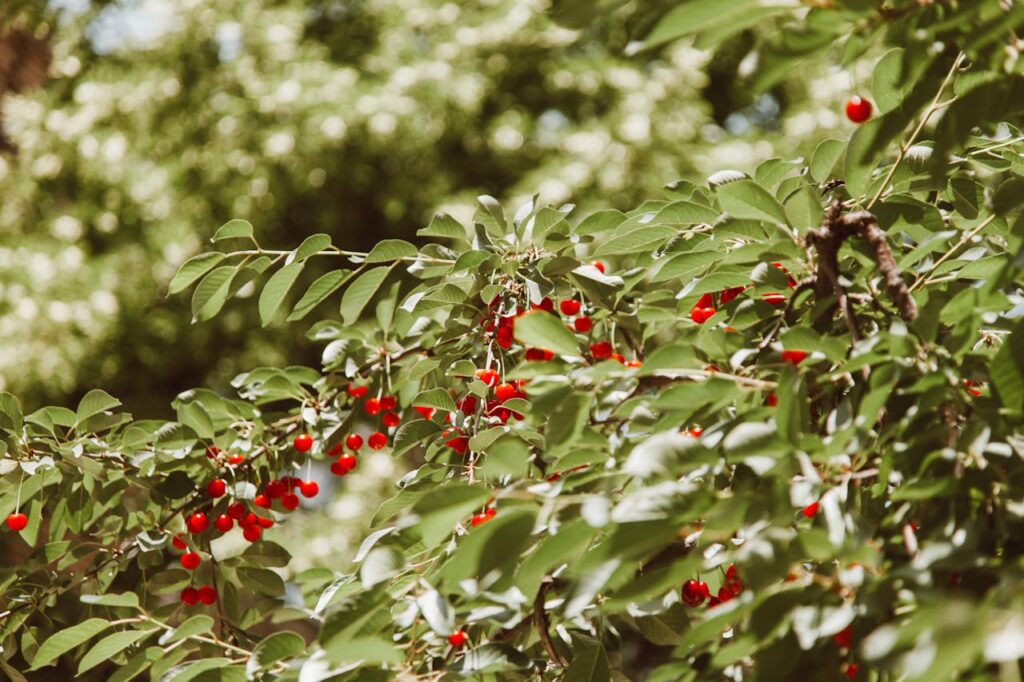
Stella Cherry Trees in Urban Gardens
Compact Growth: Why Stella Trees Fit Small Spaces
One of the biggest advantages of Stella Cherry Trees is their compact size. They are perfect for urban and small gardens. These trees are more manageable than many other fruit trees. Their dense canopy provides plenty of fruit without overwhelming smaller garden spaces.
Stella Cherry Trees have moderate root systems that won’t cause damage to foundations or underground pipes. They are suitable for planting near buildings or fences. This makes them perfect for city dwellers looking to grow fruit in limited spaces.
Benefits of planting in small spaces:
- Less maintenance: Easier to prune, water, and manage in confined areas.
- Quick fruiting: Stella trees begin producing cherries within a few years.
- Beauty and utility: Their attractive blossoms and foliage make them a great addition to your garden.
Growing Stella Trees in Pots and Containers
You can successfully grow Stella Cherry Trees in pots or containers. Here’s how to do it:
Choosing the Right Pot:
- Select a large container (at least 18–24 inches in diameter and depth) to allow room for the tree’s roots to spread.
- Opt for a well-draining pot to prevent waterlogging.
Planting and Care:
- Use a high-quality potting mix formulated for fruit trees. The mix ensures good drainage and enough nutrients.
- Container-grown trees dry out faster than those planted in the ground.
- Fertilize in early spring and late summer with a slow-release fertilizer to keep the tree nourished during the growing season.
- Ensure the tree gets at least 6 hours of sunlight per day for healthy growth and fruit production.

Common Challenges and How to Overcome Them
Troubleshooting Poor Growth or Lack of Fruit
Here’s how to troubleshoot and address common issues:
1. Lack of Growth:
- Possible Cause: Poor soil, insufficient sunlight, or over-fertilization.
- Solution: Ensure your tree receives at least 6–8 hours of sunlight daily. Make sure the soil is well-draining and nutrient-rich. Avoid excessive nitrogen fertilizers, they encourage leaf growth at the expense of fruit production. Consider applying a balanced, slow-release fertilizer. Add compost to enrich the soil.
2. Poor Fruit Production:
- Possible Cause: Stress, lack of pollination or improper pruning.
- Solution: If the tree is not receiving enough nutrients. Fertilize it with a formula suited for fruit trees. Be sure the tree is pruned properly. Check for pests or diseases that may affect fruiting.
3. Yellowing Leaves:
- Possible Cause: Overwatering, nutrient deficiencies, or pest infestations.
- Solution: Check for root rot caused by overwatering and adjust your watering routine. Add a slow-release fertilizer with micronutrients to the soil. Inspect the tree for signs of pests like aphids or scale. These pests can cause damage to leaves.

Managing Frost and Weather Challenges
Stella Cherry Trees can be vulnerable to extreme weather conditions.
1. Late Spring Frosts:
- Solution: If a late frost threatens your tree. Cover the blossoms with a frost cloth or burlap to protect them from the cold. Try spraying water on the tree overnight during a freeze. It will protect the flowers with a thin layer of ice that insulates the buds.
- Solution: Plant your tree in a sheltered area. Keep them away from cold winds. Plant in a spot that benefits from heat radiating off walls or fences.
2. Heat Stress:
- Solution: Ensure your Stella Cherry Tree receives adequate water during dry spells. Water deeply when the tree is in bloom or fruiting phase. Mulch around the base of the tree to keep moisture and regulate soil temperature.
These solutions help mitigate the risks and keep your tree healthy throughout the seasons.

Conclusion
Celebrating the Stella Cherry Tree’s Role in Your Garden
Stella Cherry Trees are a reliable source of delicious fruit. They offer a convenient and low-maintenance way to enjoy cherries at home. The Stella Cherry Tree is the perfect solution.
You can grow a healthy, thriving Stella Cherry Tree that will reward you with bountiful harvests year after year. These trees will delight you with their beauty and productivity.
